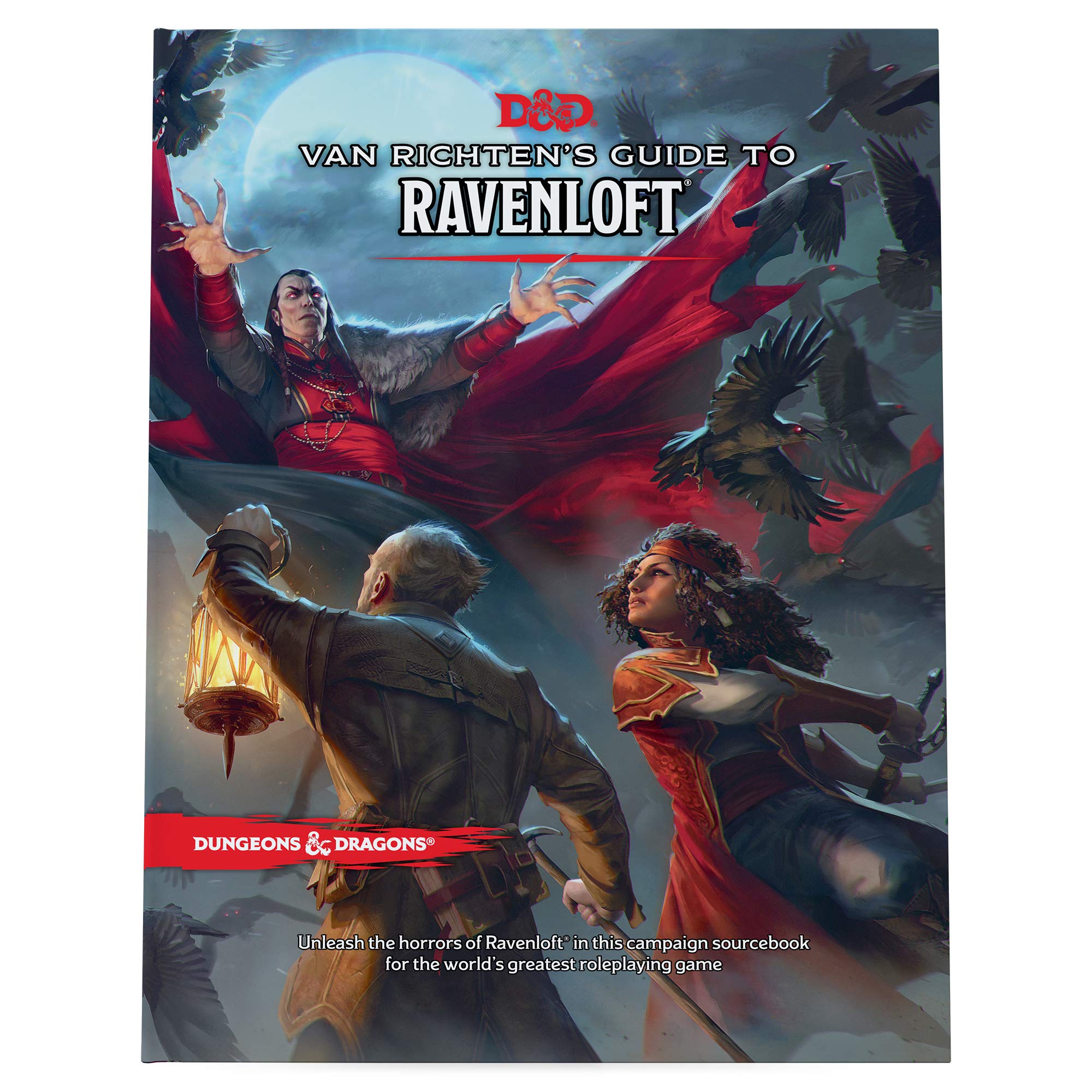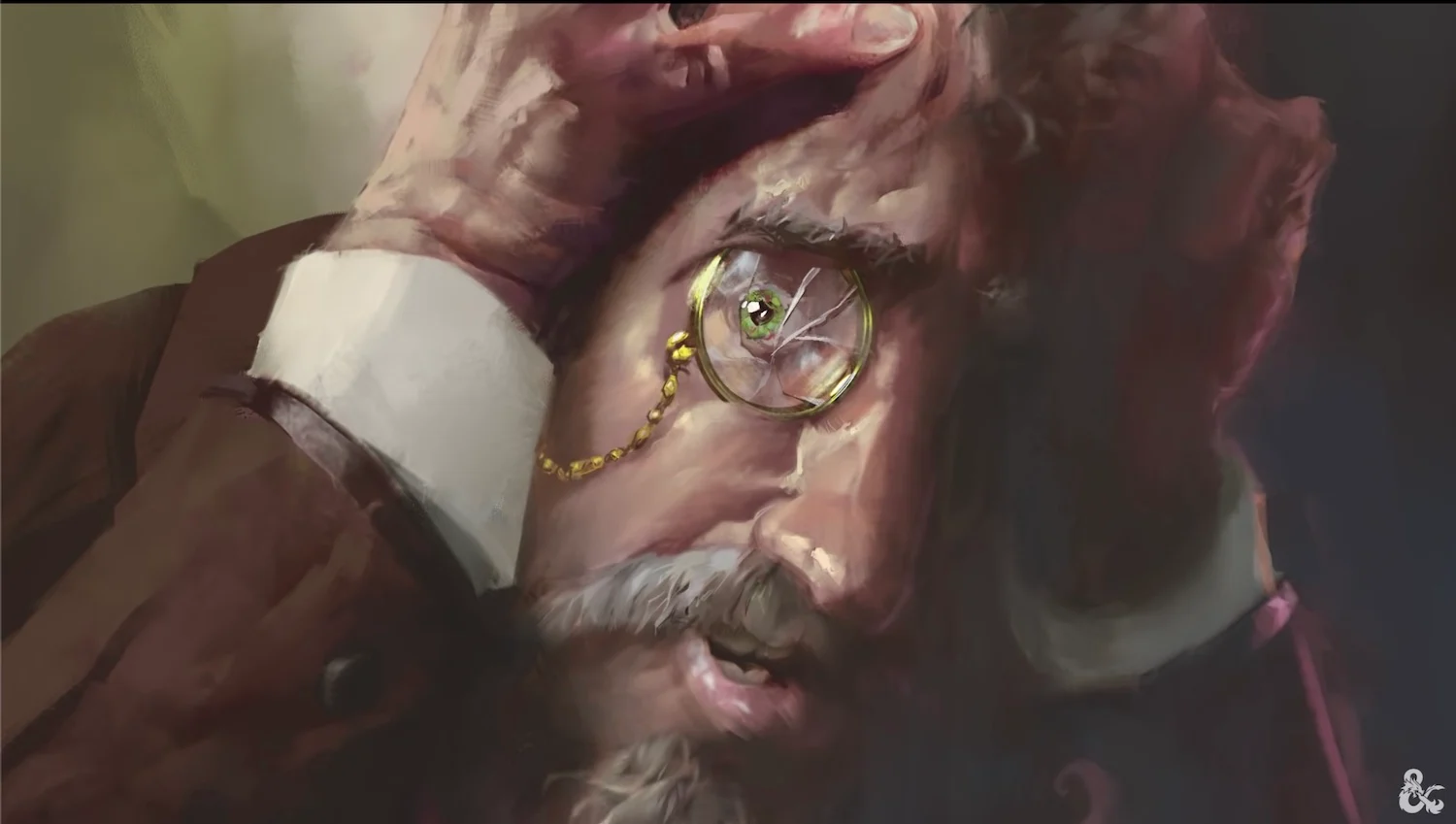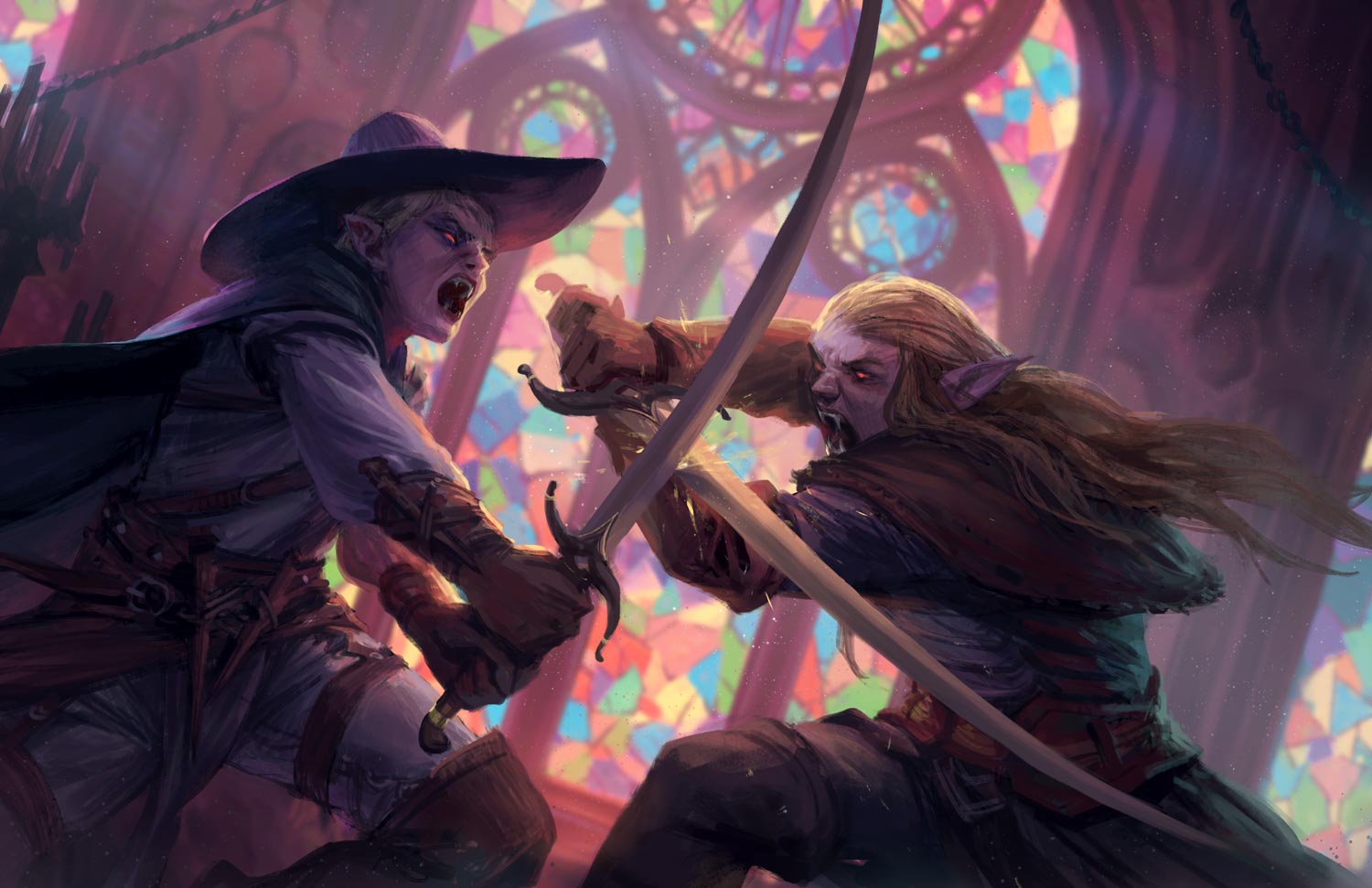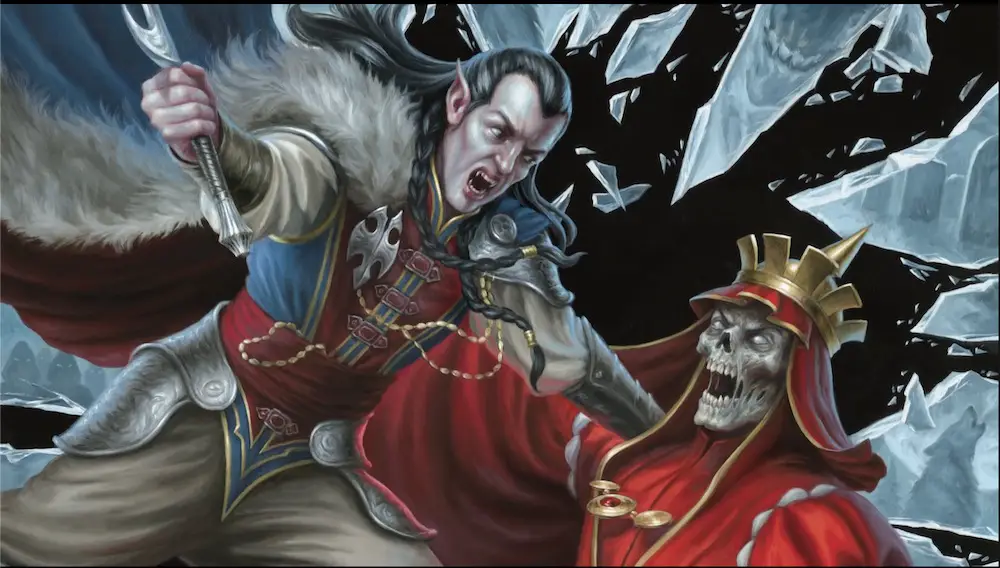The day has come for the world to finally enter the mists of Ravenloft as Van Richten’s Guide To Ravenloft finally hits shelves. They crammed a lot of info into this book, including new class options and details descriptions of the Domains of Dread that make up Ravenloft. In order to get an idea of the dark minds behind the new book, we spoke to F. Wesley Schneider, the Senior Game Designer for Dungeons & Dragons.

Dan: How do you tackle a setting as venerable as Ravenloft? How do you address the decades of lore that it’s built up?
Wes: Everything’s always an interpretation. We see it more often in film than we do in books and games, but just think of all the pieces of media you’ve seen that bear the name Dracula. How many of them start with Johnathan Harker’s travels? How many of them aren’t set in the 1800s? How many of them are films, TV series, musical collections, video games, plays, or something entirely other than the book’s original medium? Interpretations don’t overwrite the original, they’re outgrowths, reactions, developments, descendants.
The same is true of every interpretation of the classic 1983 adventure Ravenloft—one of the most adapted D&D adventures of all time. Each time it takes shape it’s a little different; sometimes it’s not even a D&D adventure.

Van Richten’s Guide to Ravenloft takes this same approach. It is not a reprint of every Ravenloft-branded D&D product that’s come before. Rather, it’s a distillation of many of the richest flavors from the setting’s past presented for both long-time fans of these setting and players entirely new to Ravenloft. It leans heavily into the fact that the Domains of Dread are constantly changing, shifting, merging together, and breaking apart—sometimes in the most unsettling ways—giving DMs the opportunity to explore D&D’s home for horror or create their own unique nightmares.
Dan: Strahd had a bit of a bumpy transition into 5e, something that the ReVamped edition made strides to change. How did you update some of the older lore?
Wes: Horror is messy. Gothic horror, with its roots in centuries past, even more so. There’s plenty to love and be creeped out by in the Ravenloft of the past century, but horror has changed since the 80s and 90s. D&D has changed as well, and fortunately Ravenloft is a setting that has endlessly malleability and space. Much of the setting is the same, but we’ve widened its inspirations to encompass not just classic horror stories but also the terror tales modern creators and horror fans love.
Dan: The focus in the new book is horror. How do you approach writing horror on the tabletop? How does it work in a collaborative game like Dungeons & Dragons?

Wes: The whole book explores exactly this subject. Ravenloft isn’t just a setting, it’s an example. Every one of the Domains of Dread exemplifies its own distinct type of horror. Ravenloft has always been a realm of gothic horror, but it’s also always been so much more than that. The setting features cosmic horror tropes, folk horror creepiness, endless dark fantasy influences, and examples from every other horror genre. Van Richten’s Guide to Ravenloft focuses on several genres of horror, explores some of what makes them distinct, and provides GMs with tips on how to incorporate them into their own domains and adventures.
Does each domain correspond to a different “genre” of horror? How do you make those genres evident on the page?
Wes: Each classic Ravenloft domain then serves as its own distinct example. Want to create a domain steeped in gothic horror vibes? Maybe it looks like the vampire-haunted realm of Barovia. Want to give your gothic horror domain a dash of psychological horror? Then maybe it looks more like the baroque land of Borca, with its endless family treacheries. You can run countless adventures in any of these domains, or you can mine them for inspiration to create a fresh horror-scape unique to your adventures.
Dan: How does writing a horror setting differ from the pulpy fantasy of The Forgotten Realms or the dungeonpunk of Eberron?

Wes: It doesn’t need to. Horror isn’t a type of place, it can show up anywhere. The Domains of Dread illustrate this through their varied lands, many of which have histories rooted in other D&D settings and feel radically different. Some domains, like Mordent and Richemulot, have an 1800s vibe, others like Darkon and Hazlan feature high magic trappings, and still others, like Lamordia, have more of a steampunk feel. And then some domains are truly outlandish, like the pulp Mars landscape of Bluetspur or the endlessly shifting city of I-Cath. DMs can set their horror adventures anywhere, and no matter where their stories take place, the Mists of Ravenloft might reach out to drag heroes into an unexpected nightmare.
Dan: Do you have any tips for DM’s who might want to run something with the new books?
Wes: Be theatrical. Lean into the experience of telling a ghost story. Dim the lights, cue up a playlist of subtly creepy music, and make sure your group’s prepared to help tell a spooky story. There’s tons of advice to help you do this in the book, but then we show you how to put it all together. Van Richten’s Guide to Ravenloft includes a complete adventure introducing characters to the Domains of Dread. “The House of Lament” is a haunted house adventure that’s also a sandbox for DMs to explore spooky hauntings and ancient mysteries. It incorporates the book’s tips on how to create frightening adventures, particularly those focusing on creating atmospheric encounters. The adventure revolves around a series of séances where the players might reach out to any one of several spirits that haunt the house. And to facilitate this, the book provides a unique spirit board and planchette steeped in Ravenloft lore. The effect is a unique D&D experience where players hold a séance mid-game in what we hope is a creepily unforgettable encounter.
Dan: Can you tell us about the dark gifts and how players can use them?

Wes: Dark Gifts are suites of creepy, supernatural traits that provide players the option to make horror stories personal. All of them are springboards into customizable horror origins of the player’s design, and they come with unique powers that also have unpredictable twists. The Dark Gift called Gathered Whispers, for example, suggests that you’re haunted—perhaps by ancestral spirits, alien entities, or anything else you can imagine—and you can compel those spirits to whisper to others around you or unleash a wailing cacophony. However, there are times those voices might overwhelm you, resulting in a host of unexpected effects.
Dan: Do you have a favorite domain to work with?
Wes: I’ve got a lot of favorites, and I managed to work most of them into the book. I definitely have a soft spot for the domain that started it all, though: Barovia. Along with presenting an overview of Ravenloft’s first domain and its infamous Darklord, the vampire Count Strahd von Zarovich, the overview of Barovia explores how you might take the setting’s most familiar tale—Strahd’s pursuit of his reincarnated, ages-old obsession, Tatyana—and give it a new twist. Maybe in your version the Dark Powers’ manifestation of Tatyana returns as a vampire hunter, twins, or a monster herself. Maybe she travels through other Domains of Dread or is also pursued by another Darklord. Or, as some readers have proposed, maybe every possibility presented in the section happens at once and dozens of Tatyanas reincarnate. Curse of Strahd meets Being John Malkovich is exactly the sort of bizarre, psychological horror possibility I’m delighted to see readers come up with. I can’t wait to hear how folks’ “Too Many Tatyanas!” campaigns go.

You can pick up a copy of Van Richten’s Guide To Ravenloft at your FLGS, Online, or digitally. And don’t forget to check out our interview with Matthew Lillard about Beadle & Grimm’s Shadowy Silver Edition, now available for pre-order. You can also enter our Van Richten’s Guide To Ravenloft giveaway for a chance at a copy as well!
Images via Dungeons & Dragons
Have strong thoughts about this piece you need to share? Or maybe there’s something else on your mind you’re wanting to talk about with fellow Fandomentals? Head on over to our Community server to join in the conversation!

